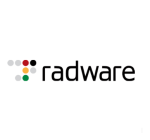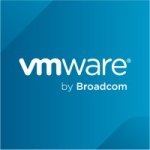
A10 Networks Thunder ADC Primary Use Case
SD
Sebastien Deboulet
Talent Acquisition Partner at Worldline Global
We use the solution for load balancing purposes.
View full review »We use the solution for ProTechVIP, the software, the client, the servers, and the firewalls. We mix them, protecting the connection and the servers from direct access.
View full review »Buyer's Guide
A10 Networks Thunder ADC
October 2025
Learn what your peers think about A10 Networks Thunder ADC. Get advice and tips from experienced pros sharing their opinions. Updated: October 2025.
872,029 professionals have used our research since 2012.
Our primary use case is load balancing, from Layer 4 to Layer 7, on different partitions. And it's also our internet gateway router with our ISP. We're using the standard DDoS protection which is on the box itself.
We have about 91 virtual IP addresses we're load balancing at the moment.
View full review »Our company uses the solution to enhance our client's connection to their data centers. One data center is in Brasilia and the other is in Sao Paulo. The solution bolsters the connection between the data centers.
View full review »DC
reviewer445593v
User at a government with 501-1,000 employees
Our primary use case is the application delivery controller part where we mainly use the server load balancing features to front-end our back-end servers to give us additional high availability, some resiliency, and some failures.
All our applications are hosted on a private on-premises data center. We run our own data center with VMware being the main virtualization platform. Then, running on top of VMware, we have Windows and Linux clusters, so x86 Windows and x86 Linux.
Our biggest security concerns are malicious code, user data theft, DDoS attacks, insider attacks, brand damage/loss of confidence, and phishing/fake sites. Hacking/cyber defacement is one of our concerns, but not the biggest. A lot of these security concerns are around data loss and data loss prevention. We are a pension institution, so we do not want to lose any of our member data. We have security things in place using the application firewalls, as an example, to help with our front-end sites.
We are running virtual machines and currently doing a proof of concept with containers. However, we're not working with containers on-prem yet.
View full review »PD
PrateekDeem
Business Partner at Sparrow Networks
Our clients are using it for their entire network. They have multiple networks across India. They are using it for application load balancing.
They have multiple servers.
View full review »NC
Nuwan Chathuranga
Team Lead - Network and Security at Connex Information Technologies
A10 Networks Thunder ADC can be deployed on-premise or virtually.
A10 Networks Thunder ADC is used for global load balancing.
View full review »MQ
Muhammad_Qureshi
Network Consultant at a aerospace/defense firm with 5,001-10,000 employees
We are in the government sector and we use this solution for load balancing and application management.
View full review »Our primary use case is for servicing a remote workforce. Especially these days when a lot of people are working remotely, a solution like this is important. We have to deploy applications and we do not necessarily want to upload the applications into the cloud or locally on desktops or laptops. ADC is really good for desktop virtualization and application delivery. Instead of having a full client, you look at a projection hosted in the data center. All the processing is being done back in the data center in the corporate domain. Because of the fact that the processing is not being taken care of locally, ADC is a very lightweight client that handles the feed on your laptop. It also enhances security.
Everything is kept in the server room, not exported locally to someone's house or whatever location they are working in. You do not have to worry about securing the data. There are certain programs that you have to patch a lot, like Adobe Flash — which seems to always need a patch. Instead of doing that on all 100 laptops that are in the field, you just do it once in the data center and everybody uses that same version. That type of simplification for your deployments is another benefit of ADC.
Because the maintenance is all happening at the data center, it is a lot more controlled and it is way easier. Another thing that this helps with is that only certain people get access to certain applications. The accountants are really the only ones who need access to the accounting software. It is really easy to set up groups based upon Active Directory and then define who gets access to those applications. That ability to limit access is really kind of cool and can potentially save money and licensing costs.
View full review »The A10s that we have in Florida are being used for load balancing. We have a pair of A10s there, an active and a standby, and we are balancing the traffic between. We also use our A10s, in general, for provisioning wireless products. Eventually, we will use our new A10s for more stuff.
Our applications are hosted in a private on-premises data center, on public cloud in AWS, and in a hybrid cloud which is primarily public infrastructure.
Among our biggest security concerns are malicious code and DDoS attacks.
View full review »AM
Amita Mahajan
Network Analyst at Alamo Colleges
We are using ADC for load balancing. Most of our enterprise applications are behind ADC.
It's on-premise.
View full review »The primary use case is server load balancing.
We use the on-premise deployment model.
View full review »SS
Shiven Singh
Network Manager at a university with 1,001-5,000 employees
- Load balance web traffic
- Load balance application traffic
- DDoS protection
- Carrier Grade Network (CGN)
We have the ADC product, as well as the CGN.
We are using both the public and private deployment model. We are using AWS as our cloud provider.
View full review »We use A10 Networks Thunder ADC for the application delivery controller.
View full review »NC
Nuwan Chathuranga
Team Lead - Network and Security at Connex Information Technologies
We are distributors and have been for a long time. We provide products to clients.
View full review »We use it for SLB and GSLB load balancing. We're using the Thunder ADC 1040 but before that we used their AX 2500.
View full review »We use it to load-balance the website.
View full review »HR
Himanshu Rastogi
IT Head at Medi Assist
My primary use case is to use it as a software load balancer.
Because of the industry that we operate in, we cannot use cloud. Therefore, we use it on-premise. We have 32 medium boxes, and that's what runs production.
View full review »Carrier-grade NAT is the purpose of using A10 Networks Thunder ADC at Turk Telekom Mobile.
View full review »Buyer's Guide
A10 Networks Thunder ADC
October 2025
Learn what your peers think about A10 Networks Thunder ADC. Get advice and tips from experienced pros sharing their opinions. Updated: October 2025.
872,029 professionals have used our research since 2012.

















